Hiking safely: these tips will help you stay safe!
- Christian Sommer

- Apr 9, 2023
- 10 min read
Updated: Jan 1
Put on your hiking boots and head for the summit – but not without the right preparation. I'll give you some practical tips to help you stay safe in the mountains.
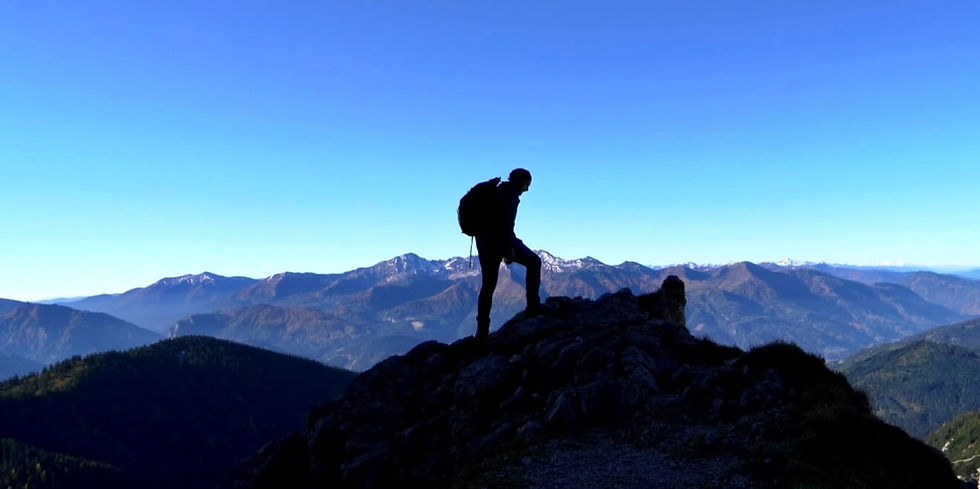
Contents
1. Plan carefully
2. Plan a tour
3. The right equipment
4. Check the weather forecast
5. Safe on the mountain
6. What to do in an emergency on the mountain
7. Accident insurance
8. Hiking gear
9. Conclusion
Plan your hiking tour carefully
Good planning is half the battle. It is advisable to prepare well before the hiking tour: Where exactly does the chosen hiking route run and how long is it? Are there refreshment stops along the way? What is the weather forecast for the region? Are there any exposed passages (fear of heights)? Do I have the right equipment for the tour? How experienced are I and my fellow hikers?
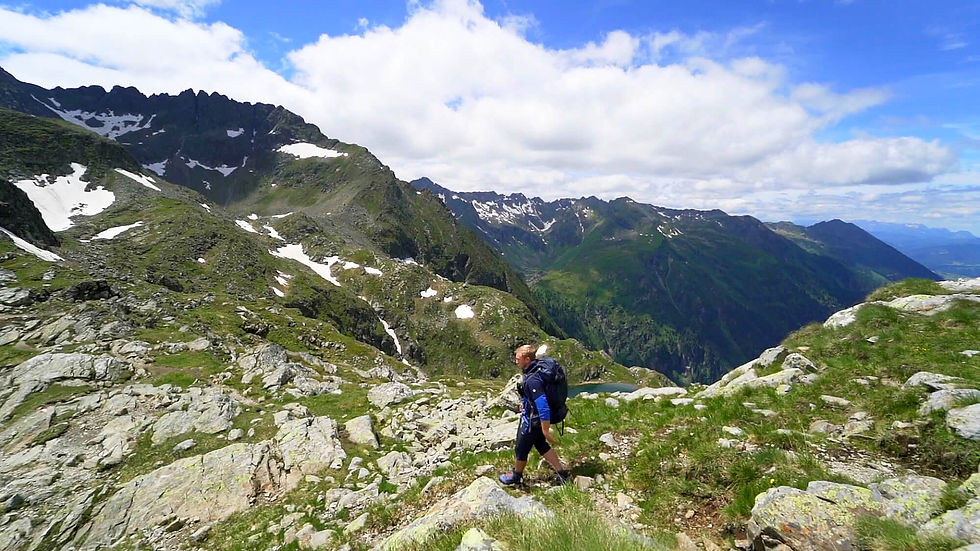
Planning a hike properly
People tend to overestimate themselves, especially at the start of the season. So don't set your sights too high for your first hike and choose a route that suits your physical condition. Tip: The same applies here as everywhere else in life: Start slowly and build up over time! If you are hiking in a group, always tailor the tour to the weakest member. Especially if there are older people or children in the group, you should take it slower. Also remember to plan enough breaks that are long enough so that you don't have to continue as soon as the stragglers arrive.
If you would like to find out more about hiking with children, I recommend my article on the subject.
Once these questions have been answered, take a closer look at the hiking route. Hiking maps are extremely helpful when planning a tour, as they provide you with information on altitude metres, distance and difficulty level. Tour descriptions on relevant portals and in apps also provide a good overview.
Caution: Do not blindly trust the content of online tour descriptions. They can often be incorrect and are based on the subjective judgement of the author.
For an exact calculation of the walking time, I can recommend my article here.
Here is a video of my hike through Iceland:
Hiking equipment – what you need for safe tours
As a general rule: only go up the mountain with good equipment and suitable footwear that is tailored to the respective hiking tour. High-quality hiking boots take the strain off your feet and ensure sure-footedness. Hiking poles make walking downhill particularly easy. As the weather can change quickly in the mountains, you should always have rain protection and warm clothing with you. In summer, the sun is very strong in the mountains, so sun cream, headgear and sunglasses are essential.
At this point I would like to recommend this Sun and wind cream specially developed for the mountain.
"The sun also shines behind the clouds." Quote from Karl Friedrich Wilhelm Wander
It's easier to travel light, but you should always pack the following in your rucksack: A fully charged mobile phone, energy-rich provisions (e.g. fruit, muesli bars), sufficient fluids, an emergency/first aid kit (e.g. bandages, plasters, possibly also a torch, a hiking map, a compass and a small emergency bivouac sack.
Don't forget to take an emergency bivouac with you. It consists of an emergency blanket that is cold-resistant, a whistle and a mini compass. It should be in your rucksack on every hike anyway.
As the old Scottish saying goes: "There's no such thing as bad weather, only bad clothes!"
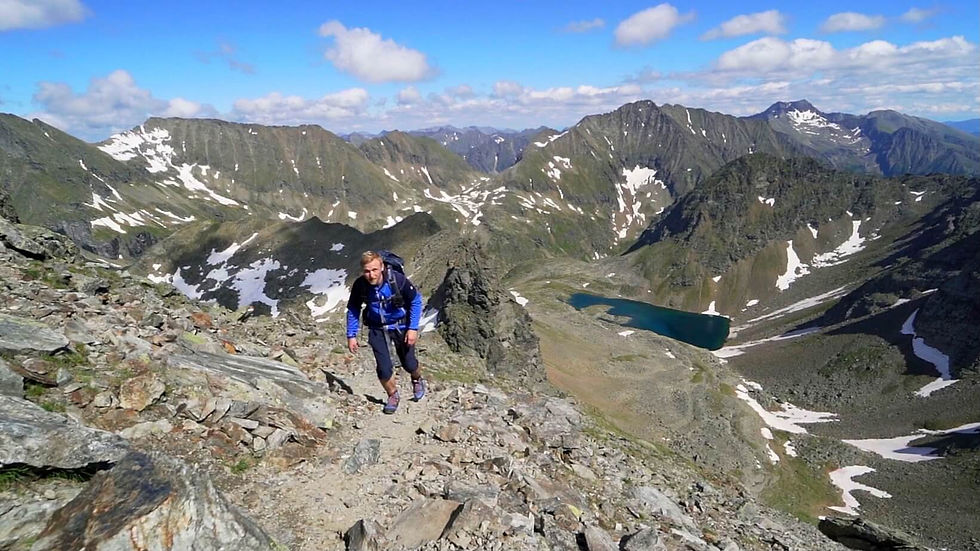
Check the weather forecast before setting off on your hike.
Even the easiest hike can be dangerous if the weather suddenly changes. A weather check in advance is a must. It is best to obtain weather reports from several sources and compare them with each other.
Staying safe and mindful when out and about in the mountains
Time pressure, excessive speed or a lack of breaks can jeopardise safety on the mountain just as much as a sudden change in weather. Mindful hiking in harmony with nature, your own fitness level and the current conditions is therefore crucial to minimise risks and enjoy the tour safely.
Choose the right pace: So it's better to walk a step slower, but safely. People often set off too quickly, especially at the start of a hike. The right pace always depends on the ability and fitness of the weakest member of the group. Too fast a pace or tiredness can also impair surefootedness and concentration. This often leads to falls or injuries.
Stay on marked trails: You should not underestimate alpine terrain: You are only safe when you hike along marked paths. Shortcuts or routes through pathless terrain are not a good idea for beginners. Only experienced hikers should do this and only if your nearest and dearest know where you are going and can locate you using GPS. Shortcuts increase the risk of losing your bearings, falling or falling rocks. Steep old snowfields can also be dangerous - if in doubt, it is better to turn back.
Long-distance hiking trails in Europe: 90 routes, all countries
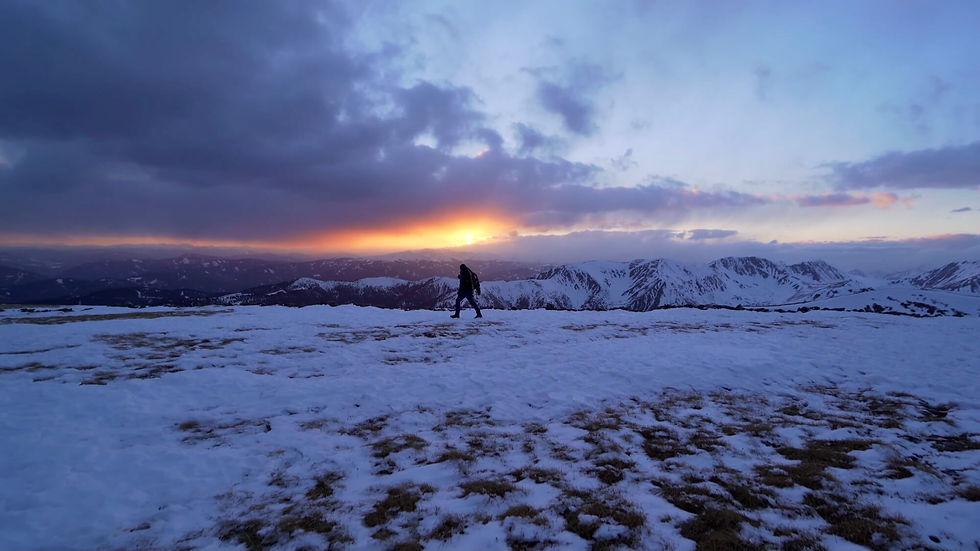
Regular breaks: if you rest, you rust, but this does not apply to hiking in the mountains. Regular breaks are not just for resting, but also for enjoying the scenery. Your body also needs enough fluids and food to maintain its performance and concentration.
Respect for animals & nature: One thing is obvious: you can't enjoy hiking without unspoilt nature. Therefore, don't leave any rubbish behind, avoid noise and stay on the marked paths to leave plants and animals untouched. Keep your distance from cows, calves and sheep on alpine pastures. Caution: Take particular care with young animals. If you are travelling with a dog, keep it on a lead.
Turn back in good time: In the mountains, thunderstorms can often come out of the blue. You should therefore keep a close eye on the weather during your hike and check the weather on your smartphone from time to time. If a thunderstorm is approaching, you should abandon the hike and seek shelter in a hut in good time. Quickly leave exposed areas such as summits, ridges, exposed surfaces or isolated trees. If this is no longer possible, please note the following: Remove your rucksack with electronic items or metal equipment from your body and adopt a crouching position with your feet closed. In such an extreme situation, keep calm and persevere!
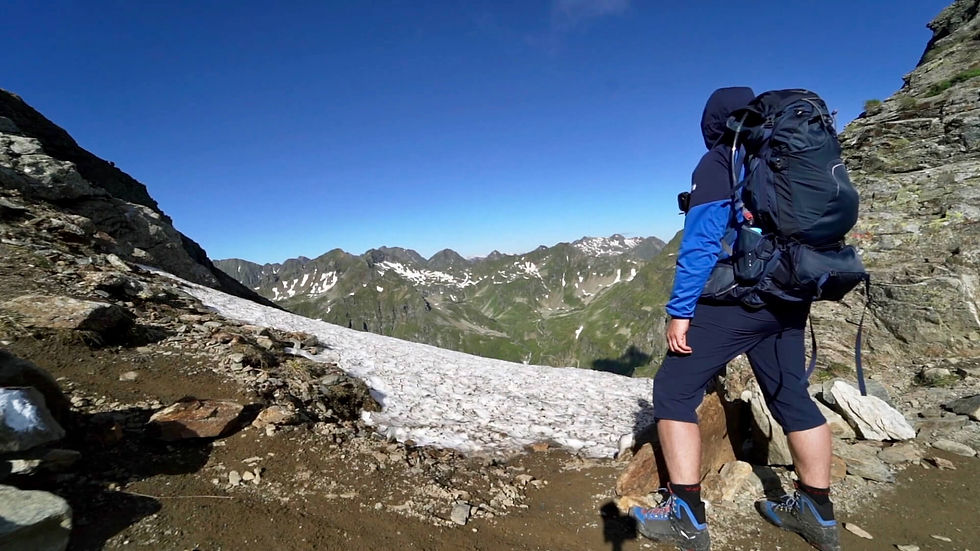
What to do in an emergency on the mountain
You should take warning signs such as shortness of breath, palpitations or nausea seriously. It is best to abort the hike and turn back or call for help. But what happens if an accident or fall occurs in alpine terrain? The most important thing in an emergency is to keep calm, get an overview of the situation and the injured person and start the rescue chain.
Alpine emergency numbers: If you are in distress in the mountains, dial the Austrian Alpine emergency number 140. If there is no reception, you can use the emergency call function on your mobile phone. This emergency call goes to 112 (Euro emergency call). To do this, first switch off your mobile phone and when you switch it on again, immediately enter 112 instead of the PIN code or press the SOS button.
Send an alpine emergency signal: If you don't have a mobile phone to hand, you can draw attention to yourself with an alpine distress signal. The signal can be emitted visually (e.g. torch) or acoustically (e.g. whistle): emit visible and audible signals 6 times a minute, pause for a minute and repeat until a response is received.
Satellite phone: Also highly recommended is the ultra light and ultra small Garmin inReach 2 Mini Satellitentelefon. It is a compact and lightweight satellite communicator and allows two-way messaging and interactive SOS worldwide. You can also share your location with your loved ones at home, anywhere in the world, at any time.
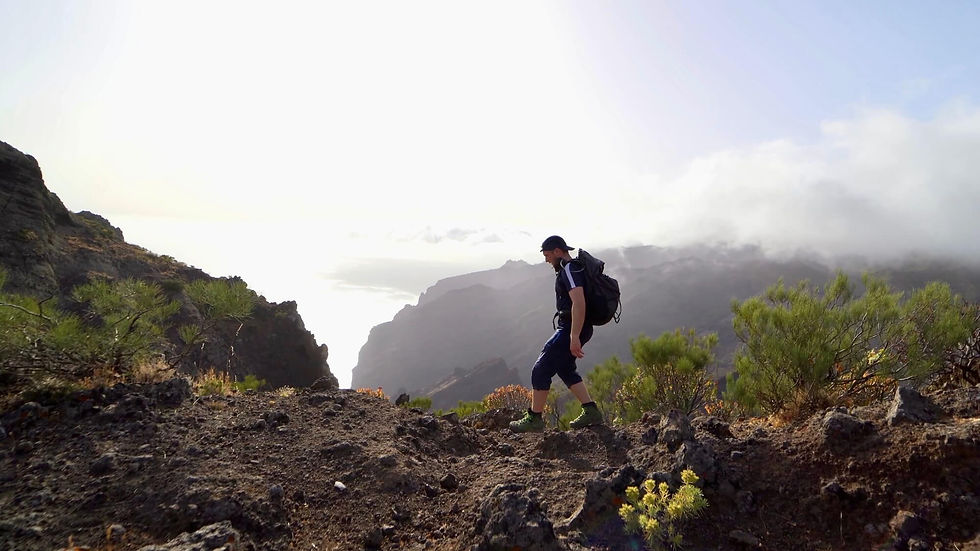
Why private accident insurance is a good idea when hiking
Private accident insurance protects you in case of leisure accidents on the mountain. Even despite good preparation and all precautions, accidents can happen on the mountain. According to the Austrian Alpine Association, around 12,000 people had accidents in alpine terrain in 2020 - most of them while hiking or mountaineering.
What many do not know: Hiking, mountaineering and climbing fall under the category of leisure accidents and are therefore not covered by the statutory accident insurance. Although costs for initial treatment in hospital are covered, costly follow-up treatments such as therapies or medical costs (e.g. dentures, cosmetic operations) are not. In these cases, only private accident insurance provides relief.
Mountain rescue: In addition, I would like to remind you of the mountain rescue service in Austria. For only 28€ per month, everyone is insured against rescue costs after an accident in alpine terrain, including all persons living in the household. More information is available at Become a sponsor | ÖBRD - NÖ/Wien (bergrettung-nw.at)
Often, accidents on the mountain require rescue by helicopter. This can also become a cost trap, because rescue costs in alpine terrain are not covered by social insurance. Without private accident insurance or membership of the Alpine Club or automobile clubs, you are left with the high costs of helicopter rescue.
Remember to insure your trip well – because a fall or other typical hiking injury can quickly result in high rescue costs. Auras Insurance offers you worldwide hiking and trekking insurance, specially designed for active travellers.
Use the discount code HIKINGFEX to get 10% off your insurance.
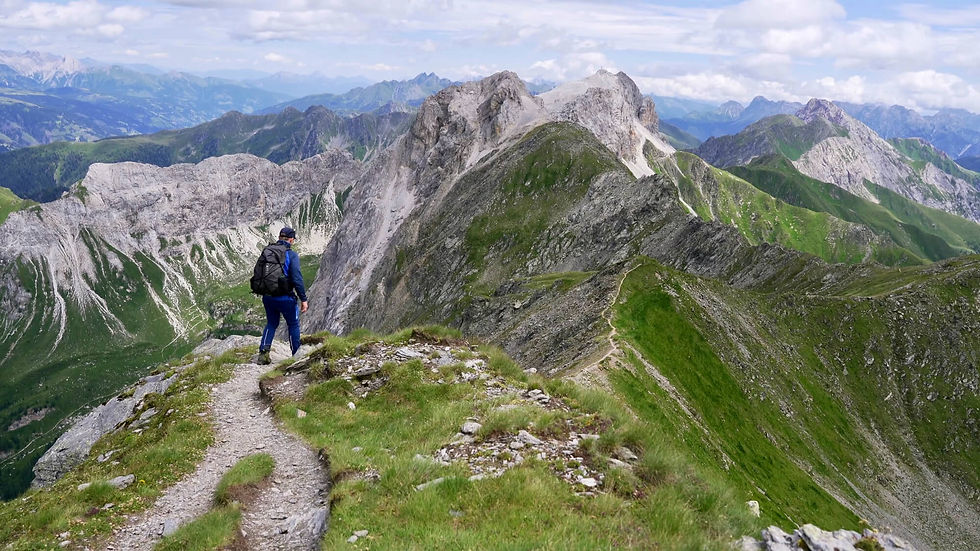
Packing list for your hike
Here I recommend the most important hiking equipment that I own, have tested myself and have also bought myself. I pay a lot of attention to the weight and quality of my equipment. The equipment should simply feel good on longer tours and also be light. I can recommend the equipment for women because my wife uses it and it is basically the same as the equipment for men.
Note: Please keep in mind that the packing list is general and you will have to adapt it depending on the season and your needs!
Advertising note: These product links are affiliate links. If you buy something through one of these links, I will receive a small commission without you having to pay more. This is for the maintenance of my blog and you support me with my project, for which I am very grateful. Thank you very much!
Clothes
Hiking boots
Hiking shorts
Long hiking pants
Functional shirt
Hybridjacket
Fleece-jacket
Rain jacket
Functional underwear
Hiking socks
Other hiking equipment:
• Sun cap
• Camping mat
• Sleeping bag
• Hut sleeping bag
• Bivouac
Hiking backback (approx. 60 litres or as required)
by EXPED - unfortunately not available on Amazon.
• Backback - Ospray (was my old one and is also good)
Technology and orientation:
• Compass
• Headlamp
• GPS device or GPS watch if necessary
• Binoculars if necessary
Catering:
• Sweets to keep up morale :)
Health & first Aid:
• First Aid (small and light)
• Tape
• Bivouac
• Toilet paper
Other:
• Passport/Insurance certificate
• cash
• Gas cartridge
Film equipment:
• Camera
• 14mm Lens
• 24-105mm Lens
• Drone
• Tripod
• Clip

FAQ – Frequently asked questions
In this FAQ, you will find answers to frequently asked questions about safe hiking, planning, equipment and behaviour in the mountains.
How important is route planning when hiking?
Careful planning is crucial for safety and enjoyment. This includes the route, walking time, places to stop for refreshments, weather conditions, your own fitness level and suitable equipment.
What equipment is necessary for long-distance hiking trails?
The basics are good hiking boots, weatherproof clothing, sufficient water, provisions, a first aid kit, a map or GPS, and a charged mobile phone. Depending on the region, additional safety equipment may be useful.
Should I rely on online tour descriptions?
Online tour descriptions are helpful, but should not be blindly trusted. They are often based on subjective assessments and may be inaccurate or out of date.
Why is it so important to check the weather before a hike?
The weather can change quickly in the mountains. An up-to-date weather report – ideally from several sources – helps to identify risks early on and turn back in good time.
How can I stay safe in the mountains?
Choose an appropriate pace, stay on marked trails, plan regular breaks and respect nature and animals. If you are unsure or the weather deteriorates, it is better to turn back.
What should I do in an emergency in the mountains?
Stay calm, assess the situation and call for help. In Austria, you can reach the alpine emergency number on 140, or alternatively the Euro emergency number 112. If you don't have a mobile phone, you can send an alpine distress signal.
Are hiking accidents insured?
Hiking is considered a leisure accident and is not automatically covered by statutory accident insurance. Private accident insurance or membership of the Alpine Club or Mountain Rescue Service is strongly recommended.

Conclusion: Safety comes first when hiking
So, as you can see, there is a lot to consider when it comes to hiking safety, but hiking is still a great way to enjoy nature and keep fit. Go on your hike responsibly and prepared to have a safe and enjoyable experience. Have a great time and good luck ;)
As always, I would be very happy to receive feedback via one of my channels.
You are also welcome to leave me a comment.
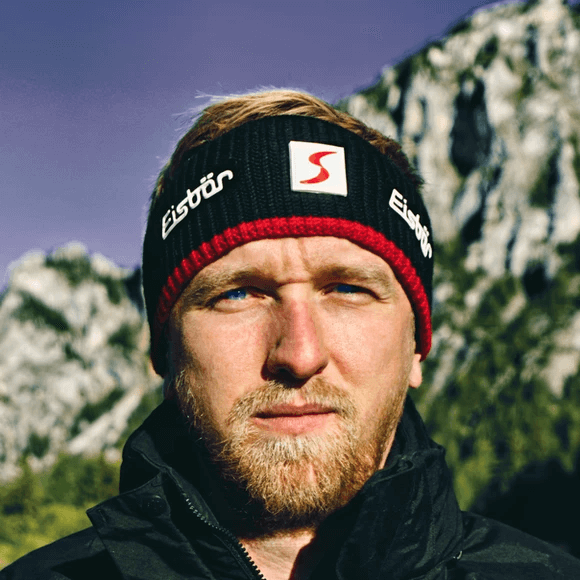
Hello, I am Christian, the chief globetrotter of this Site and an enthusiastic adventurer, hiker and filmmaker. I love to explore new paths and inspire people with them, and I love to share my hiking knowledge with you! You can also find my videos on YouTube! On my blog you can find tips for beginners and professionals on the greatest and most beautiful hiking tours there are. I want to encourage people to explore the world as a hiker, whether in the countryside, through the forest or in the mountains. True to the motto: If you haven't hiked, you haven't seen the world,
On my blog, I also write about hiking gear, the right summit training and nature conservation, as well as tips and information about hiking.







Comments